.gif)
Layers (digital image editing)
Encyclopedia
Layers are used in digital image editing to separate different elements of an image. A layer can be compared to a transparency
on which imaging effects or images are applied and placed over or under an image. Today they are an integral feature of image editors.
Layers were first commercially available in Fauve Matisse (later Macromedia xRes
),
and then available in Adobe Photoshop
3.0, in 1994, but today a wide range of other programs, such as Photo-Paint, Paint Shop Pro, the GIMP, Paint.NET
, StylePix, and even batch processing
tools also include this feature.
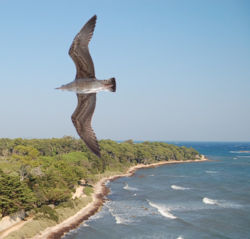
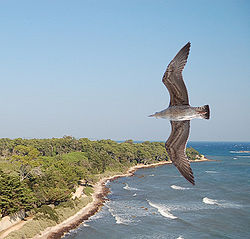
A Layer can have a certain transparency/opacity and a number of other properties. In a high end program like Adobe Photoshop, a basic layer may have more than a hundred different possible settings. Even though some of them overlap and give the same result, they give a skilled user a lot of flexibility. A free program like the GIMP
may not have as many settings, but well used they can often provide a satisfactory result.
Two Layers can blend using one of several modes
which result in different light and color combinations.
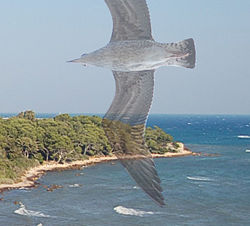
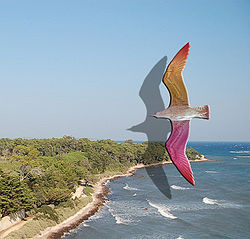
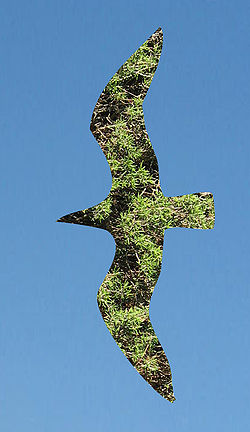
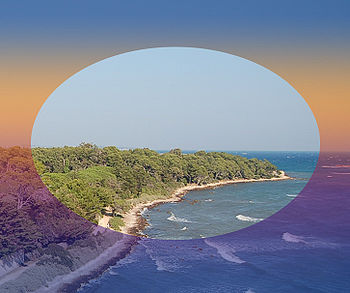
Transparency (projection)
A transparency, also known in industrial settings as a "viewfoil" or "foil", is a thin sheet of transparent flexible material, typically cellulose acetate, onto which figures can be drawn. These are then placed on an overhead projector for display to an audience...
on which imaging effects or images are applied and placed over or under an image. Today they are an integral feature of image editors.
Layers were first commercially available in Fauve Matisse (later Macromedia xRes
Macromedia xRes
xRes was an image editing application by Fauve Software, later acquired by Macromedia. It allowed for a real time preview of work. An early version also introduced the concept of layers, a new way of moving and overlapping objects within an image...
),
and then available in Adobe Photoshop
Adobe Photoshop
Adobe Photoshop is a graphics editing program developed and published by Adobe Systems Incorporated.Adobe's 2003 "Creative Suite" rebranding led to Adobe Photoshop 8's renaming to Adobe Photoshop CS. Thus, Adobe Photoshop CS5 is the 12th major release of Adobe Photoshop...
3.0, in 1994, but today a wide range of other programs, such as Photo-Paint, Paint Shop Pro, the GIMP, Paint.NET
Paint.NET
Paint.NET is a proprietary freeware raster graphics editor program for Microsoft Windows, developed on the .NET Framework. Originally created by Rick Brewster as a Washington State University student project, Paint.NET has evolved from a simple replacement for the Microsoft Paint program, which is...
, StylePix, and even batch processing
Batch processing
Batch processing is execution of a series of programs on a computer without manual intervention.Batch jobs are set up so they can be run to completion without manual intervention, so all input data is preselected through scripts or command-line parameters...
tools also include this feature.
Layer types
There are different kinds of layers, and not all of them exist in all programs. They represent a part of a picture, either as pixels or as modification instructions. They are stacked on top of each other, and depending on the order, determine the appearance of the final picture.Layer (basic)
The standard kind of layer is called simply "Layer" in most programs. It contains just a picture which can be superimposed on another one. The picture can cover the same area as the resulting picture, just a part of it, or, in some cases, a bigger part than the final picture.

A Layer can have a certain transparency/opacity and a number of other properties. In a high end program like Adobe Photoshop, a basic layer may have more than a hundred different possible settings. Even though some of them overlap and give the same result, they give a skilled user a lot of flexibility. A free program like the GIMP
GIMP
GIMP is a free software raster graphics editor. It is primarily employed as an image retouching and editing tool and is freely available in versions tailored for most popular operating systems including Microsoft Windows, Apple Mac OS X, and Linux.In addition to detailed image retouching and...
may not have as many settings, but well used they can often provide a satisfactory result.
Two Layers can blend using one of several modes
Blend modes
Blend modes in digital image editing are used to determine how two Layers are blended into each other. The default blend mode in most applications is simply to hide the lower layer with whatever is present in the top layer...
which result in different light and color combinations.


Layer Mask
A Layer Mask is linked to a layer and hides part of the layer from the picture. What is painted black on the adjustment layer will not be visible in the final picture. What is grey will be more or less transparent depending on the shade of grey. As the layer mask can be both edited and moved around independently of both the background layer and the layer it applies to, it gives the user the ability to test a lot of different combinations of overlay.
 |
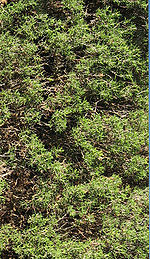 |
 |
Adjustment layer
An adjustment layer typically applies a common effect like brightness or saturation to other layers. However, as the effect is stored in a separate layer, it is easy to try it out and switch between different alternatives, without changing the original layer. In addition, an adjustment layer can easily be edited, just like a layer mask, so an effect can be applied to just part of the image.
See also
- Alpha compositingAlpha compositingIn computer graphics, alpha compositing is the process of combining an image with a background to create the appearance of partial or full transparency. It is often useful to render image elements in separate passes, and then combine the resulting multiple 2D images into a single, final image in a...
- Comparison of raster graphics editorsComparison of raster graphics editors- List :- General information :Basic general information about the editors: creator/company, license etc.- Operating system support :The operating systems on which the editors can run natively , meaning which operating systems have which editors specifically coded for them - List :- General...
- Digital image editing
- Raster graphicsRaster graphicsIn computer graphics, a raster graphics image, or bitmap, is a data structure representing a generally rectangular grid of pixels, or points of color, viewable via a monitor, paper, or other display medium...
- Image processingImage processingIn electrical engineering and computer science, image processing is any form of signal processing for which the input is an image, such as a photograph or video frame; the output of image processing may be either an image or, a set of characteristics or parameters related to the image...

